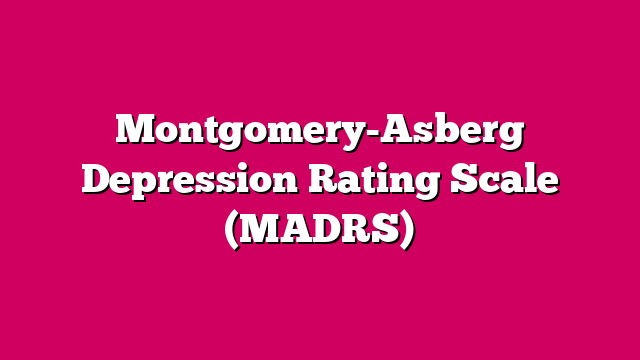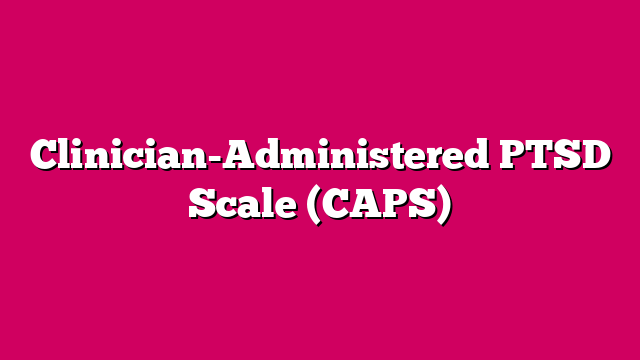Have your progress notes written for you automatically
ADHD is generally associated with childhood. However, it extends into adulthood for many. A proper diagnosis enables good treatment and management of the disorder. The most widely used tool to screen for ADHD in adults is the Adult ADHD Self-Report Scale. This article explores the ASRS, its structure, reliability, and its significance in assessing ADHD.
What is the ASRS?
The Adult ADHD Self-Report Scale, or the ASRS, is a self-report measure developed to screen symptoms of ADHD among adults. The WHO, in collaboration with researchers from Harvard Medical School and the New York University Medical School, developed the ASRS as an effective initial step in determining those who need further diagnostic review for ADHD.
Structure and Components
The ASRS consists of 18 items that reflect the diagnostic criteria of ADHD as delineated in the DSM-5. According to the DSM-5, ADHD is characterized as a persistent pattern of inattention and/or hyperactivity-impulsivity that interferes with functioning or development. For the symptoms to meet the criteria for ADHD, they have to be persistent for more than six months, inconsistent with developmental level, and impact social, academic, or occupational activities negatively (Somma et al., 2021).
The questionnaire is divided into two parts:
Part A consists of six questions, which are actually a subset of those most predictive symptoms for ADHD and is considered the most critical section for the high-risk screening of individuals. The six questions focus on key areas of inattention, impulsivity, and hyperactivity with regard to sustaining attention, trouble in organization of tasks, forgetfulness, excessive talkativeness, and impulsive decision-making. It has also been proven through research that if a respondent scores above the threshold on Part A, they are far more likely to meet the full criteria for ADHD, thus making it a very valuable early detection tool.
Part B There are 12 additional questions for a general assessment of ADHD symptoms, complementing those in Part A that might not have been captured by the latter. Part B is helpful for further elucidating the symptomatology of the individual and how these symptoms affect daily functioning; however, it is less predictive for ADHD than Part A (Weibel et al, 2022).
Each question evaluates symptom frequency over the past six months using a 5-point Likert scale:
Never
Rarely
Sometimes
Often
Very Often
Higher frequency responses (“often” and “very often”) indicate a stronger likelihood of ADHD-related impairment. The scale helps assess the consistency and severity of symptoms over time.
Scoring and Interpretation
Responses to the six Part A questions determine whether an individual has a high likelihood of ADHD. If a certain number of responses fall in the “often” or “very often” categories, the person is flagged for further assessment. It is designed to highlight the most predictive symptoms.
Part B section provides additional context on symptom severity but does not contribute directly to determining whether an individual has ADHD. Instead, it helps clinicians gain a fuller picture of the individual’s experiences and functional impairments.
Psychometric Properties: Reliability and Validity
Research documented that the ASRS is a highly sensitive and valid screening tool. That is, there is strong sensitivity (true identifying cases) and specificity (non-case ruling) to this form, which indicates the first vital step in the diagnosis of adult ADHD. At the same time, however, it will not be able to constitute the diagnostic tool on its own. Official diagnosis by clinical examination from the health professional must be carried out, including in-depth history, and additional tests may be prescribed.
In clinical settings, the ASRS is often used during initial evaluations before a comprehensive diagnostic assessment. Some clinicians may also use it periodically to track symptom progression over time.
The ASRS is an evidence-based screening tool. Many studies have supported its sensitivity- the things it is able to highlight, or the disorder of ADHD- and specificity in its inability to show other non-ADHD disorders. Part A, in particular, has been shown through research as being highly predictive of an ADHD diagnosis. However, the ASRS is not a diagnostic tool on its own; rather, it is supposed to screen for ADHD and help guide further clinical study (Weibel et al., 2022).
The ASRS is widely utilized by:
- Healthcare professionals in primary care, psychiatry, and psychology to screen adults who report symptoms of ADHD.
- Researchers studying ADHD prevalence, symptom expression, and treatment efficacy.
- Individuals who suspect they may have ADHD and want a preliminary self-assessment.
Significance and Use Cases
The ASRS is widely used in clinical settings, research studies, and self-assessment. Key advantages include:
- Quick and Easy: Takes only a few minutes to complete.
- Accessible: Freely available and can be self-administered.
- Guides Further Evaluation: Helps clinicians decide whether a full ADHD assessment is necessary.
Limitations
While the ASRS is an effective screening tool, it has some limitations:
- Self-report bias: Since individuals complete the questionnaire themselves, responses may be influenced by self-perception, misunderstanding of symptoms, or social desirability bias. This can lead to over-reporting or under-reporting of symptoms.
- Not a standalone diagnostic tool: A positive ASRS score should prompt further clinical assessment but does not confirm an ADHD diagnosis. Relying solely on the ASRS can result in misdiagnosis or missed cases.
- May not capture all ADHD presentations: Some individuals, especially those with strong coping mechanisms or structured environments, may not recognize their symptoms, leading to an underestimation of ADHD severity.
Despite these limitations, the ASRS remains a valuable first step in identifying ADHD symptoms and guiding individuals toward professional evaluation (Becke, 2021).
The ASRS represents an evidence-based screening tool that has been in wide usage for identifying adults who possibly have ADHD. It is quick, accessible, and effective for preliminary assessments, though it always is to be followed by a professional clinical evaluation.
Understanding its structure, scoring system, and limitations ensures it is used appropriately in both clinical and research settings. If you think that you have ADHD, it would be better if you consulted a healthcare professional so you could get the proper diagnosis.
References
- Becke, M., Tucha, L., Weisbrod, M., Aschenbrenner, S., Tucha, O., & Fuermaier, A. B. (2021). Non-credible symptom report in the clinical evaluation of adult ADHD: Development and initial validation of a new validity index embedded in the Conners’ adult ADHD rating scales. Journal of Neural Transmission, 128, 1045-1063.
- Somma, A., Adler, L. A., Gialdi, G., Arteconi, M., Cotilli, E., & Fossati, A. (2021). The validity of the World Health Organization Adult attention-deficit/hyperactivity disorder self-report screening scale for diagnostic and statistical manual of mental disorders, in adolescence. Journal of Child and Adolescent Psychopharmacology, 31(9), 631-638.
- Weibel, Sébastien, Floriane Bicego, Sarah Muller, Emilie Martz, Mădălina Elena Costache, Charlotte Kraemer, Gilles Bertschy, Regis Lopez, and Luisa Weiner.“Two facets of emotion dysregulation are core symptomatic domains in adult ADHD: results from the SR-WRAADDS, a broad symptom self-report questionnaire.” Journal of Attention Disorders 26, no. 5 (2022): 767-778.
Disclaimer
All examples of mental health documentation are fictional and for informational purposes only.









